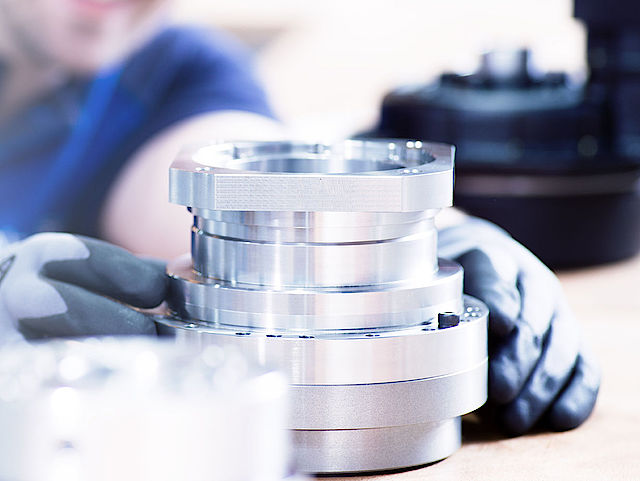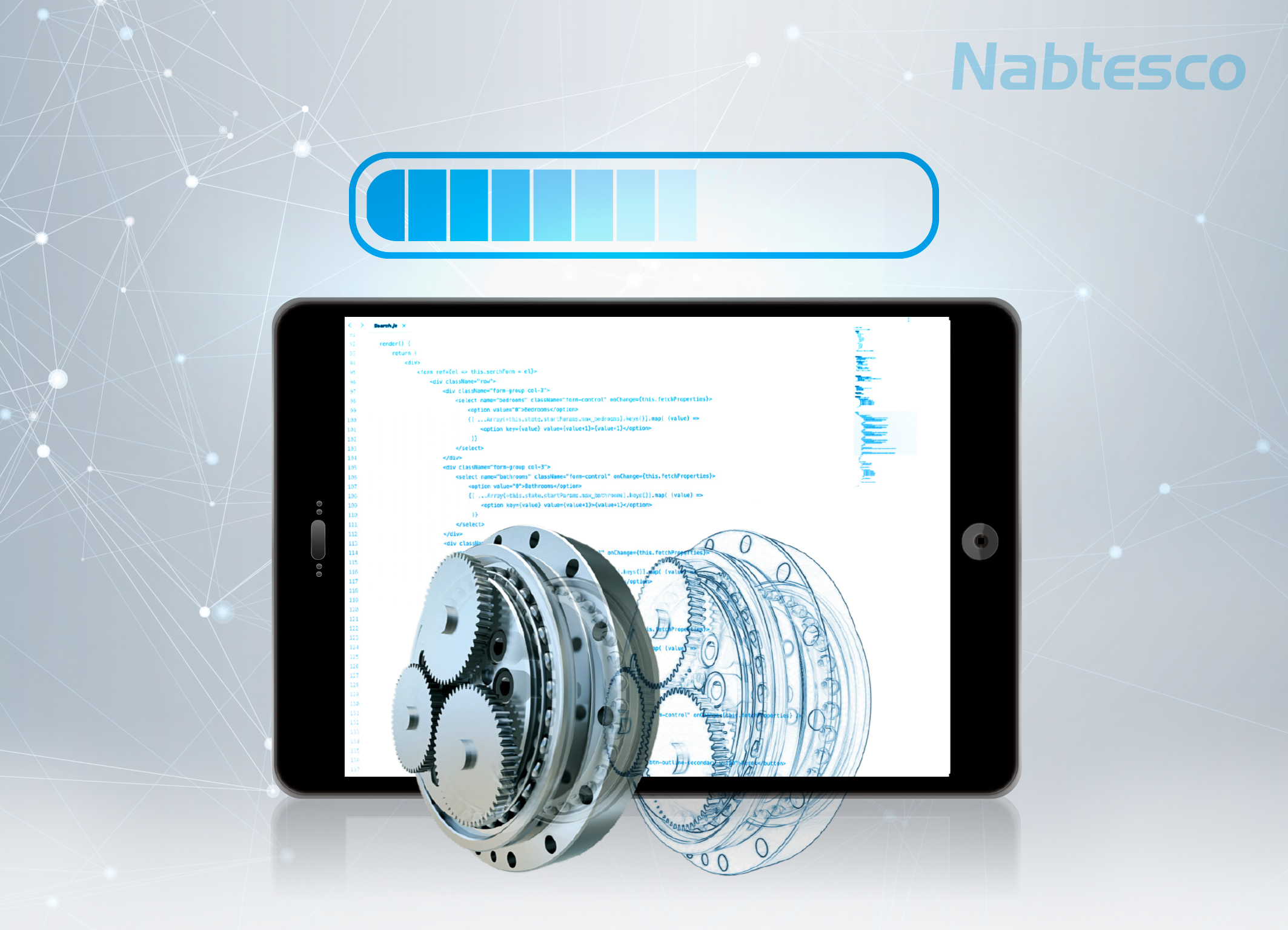



Read more of the latest news from Nabtesco. Discover our company news, specialist articles, press releases and LinkedIn Posts.

As mechanical components, gears belong to the analogue world. Does that make them an endangered species in the digital age? By no means. The opposite is the case. Gears transmit and convert torques, rotational speeds and directions, as well as forces, which makes them a central element in the power train of production machines. They define the pace and the cycle, and they are the key to consistent process optimisation and maximisation of production efficiency – also, or especially, in the age of digitisation.
The role of gears in the digital age
But how do the two aspects of gears and digitisation go together? How does the digital transformation of analogue products come about? What role can gears play in the age of Industry 4.0? Nabtesco, too, has looked into such issues. Answers can be found not only at the product level, but also at the enterprise level, because digital innovations alone are not enough. Manufacturers of mechanical products, such as Nabtesco, will inevitably have to realign strategically in order to meet the upcoming challenges. To remain competitive in the age of digitisation requires fresh ideas, bold decisions and unconventional solutions. It is necessary to abandon deep-seated mindsets, to sound out viable perspectives for the future, and to develop new fields of growth. Nabtesco is determined to achieve the transformation that will make the company and the cycloidal gear fit for the future.
The digitisation of gears
But what does the digital gear look like? What added value does it create and what opportunities does it open up for industrial automation? The digitisation of gears is still in its beginnings, but the potential is huge. The crucial concept is hybridisation, or the combination of different technologies. An example of this is the digital twin of a precision gearbox. The digital model of physical gears and their relevant properties offers manufacturers completely new opportunities and perspectives. Robot precision can be increased by a factor of 9, for example. But the digital twin of a gearbox can also serve as the basis for future real-time monitoring of robots. Model- and gear-specific data enable an individual snapshot of the robot’s capacity utilisation and therefore an analysis of the remaining life of each individual gear in the robot.
Mechanical components and software intelligently combined
Another example that shows how well gears and digitisation go together is the electromagnetic steering actuator system for autonomous commercial vehicles – the CV-EPS platform (CV-EPS = Commercial Vehicle Electronic Power Steering). Cooperation with technology partners, in addition to the intelligent combination of mechanical components and software, resulted in a purely electromechanical steering and drive solution that is unequalled on the market – an important element for autonomous driving and a real game changer for the commercial vehicle sector.
The future of gears is digital
The above examples show that gears and digitisation are an ideal combination that can open up new markets, applications and services. And the potential is by no means exhausted. At least there is no shortage of ideas. Now it is a matter of turning the visions into reality. Without a doubt: The future is digital – for gears, too.